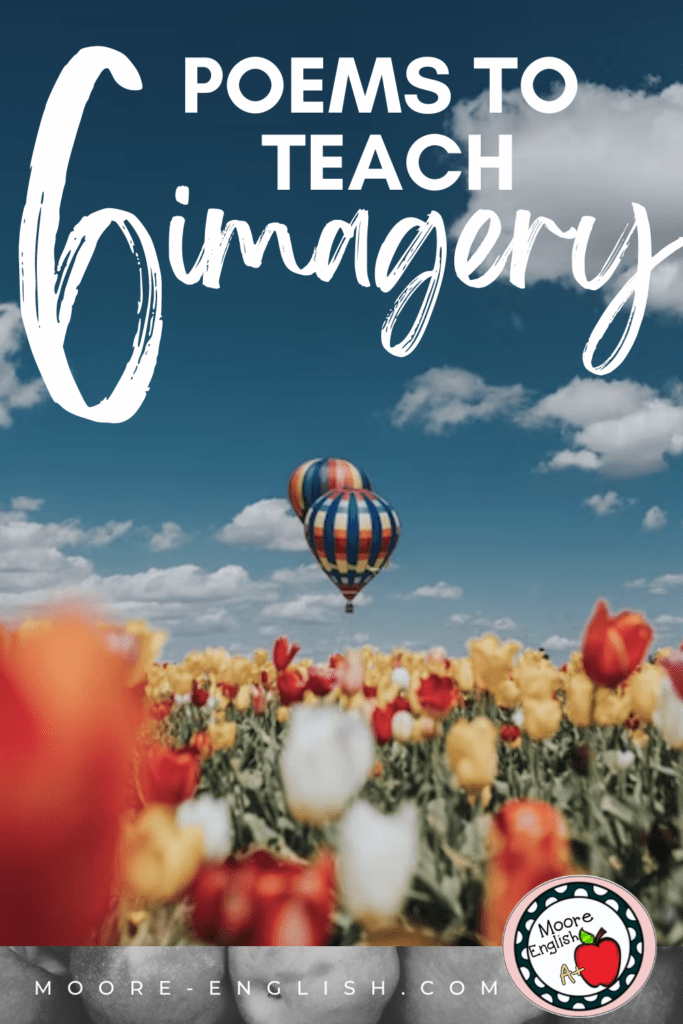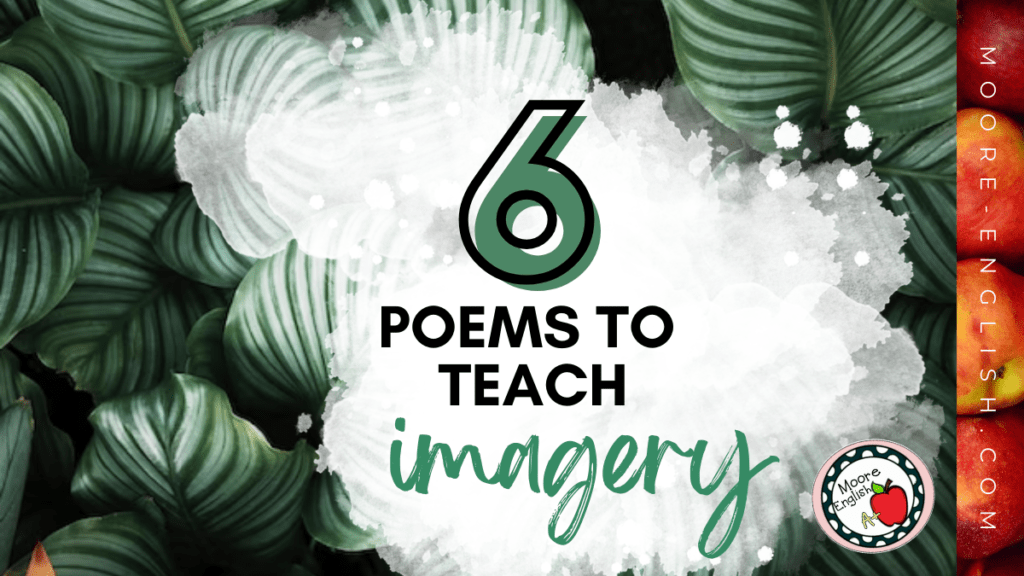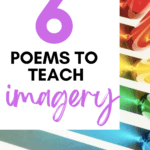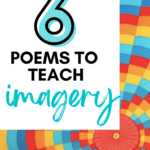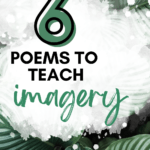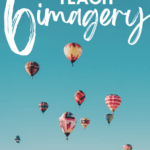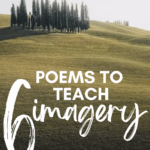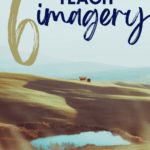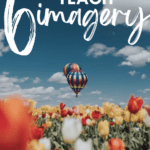Imagery is such a powerful literary device. Unfortunately, it sometimes gets lost in the shuffle. Over the years, I’ve looked for texts that put imagery front and center. In particular, these are poems I often reach for during intervention. If a student is struggling to understand mood, word choice, syntax, or connotation, this is often a good place to begin.
Getting Started with Imagery
Before diving straight in to imagery, there are a few scenes or passages I like to show students. Oftentimes students associate imagery with lovey dovey language, but it can also be brutal and confrontational. That’s where these text recommendations come in.
To use these texts, choose the passage that resonates with you and create a gallery walk or digital stations. Then, ask students to read through the various examples to identify each author’s approach.
- First, the football scene from The Chocolate War by Robert Cormier features strong imagery. As a bonus, many students read this book in middle school, so its familiarity is a perfect gateway.
- Second, the buffalo scene from The Things They Carried by Tim O’Brien stays with you. This is an example of the horror that strong imagery can elicit. (Grab by free anticipation guide, too!)
- Similarly, the elephant’s death from “Shooting an Elephant” by George Orwell shows how imagery can overlap with symbolism. Of the texts here, this short scene most closely aligns with author’s purpose. Read it here.
- Finally, for a more typical or expected demonstration of imagery, teachers can’t do better than an excerpt from “Nature” by Ralph Waldo Emerson. Read it here.
For some reason, starting with prose is a good way to engage students without stress. Poetry can be scary for students, so make this less intimidating by making poetry step two.
Poetry Recommendations
Next, poetry is the perfect vehicle for teaching imagery. Overall, the compressed nature of poetry intensifies any choice an author makes, including using sensory language to paint a picture in the reader’s mind.
- First, “The Death of the Ball Turret Gunner” by Randall Jarrell is short and memorable. If you are pressed for time, this is the poem for you. It’s easy to understand, and the imagery cannot be missed. Read it here.
- Additionally, “God’s Grandeur” by Gerard Manley Hopkins shows students how authors use individual word choices to create an impression in the reader’s mind. This is a poem students can evaluate for imagery without having to get hung up on anything else. Read it here.
- Similarly, “The Darkling Thrush” by Thomas Hardy can be a good choice. The “plot” is straightforward, and Hardy uses imagery that appeals to many senses. Read it here.
- For a longer text, “The Latin Deli: An Ars Poetica” by Judith Cofer Ortiz shows how authors can use imagery alongside rhythm. This poem is a “slice of life” piece, and the imagery in it gives readers a glimpse into a world many will otherwise not encounter. Read it here.
- Finally, “Song of Myself” by Walt Whitman shows imagery in all its forms. Whitman is interested in so many different slices of life that he brings readers to a variety of places and times. His use of catalogues is memorable, too. Read it here.
Themed Suggestion
If you are like me, sometimes it’s easiest to teach poetry in themed units or collections. I love a themed collection because it helps students make connections across texts. This is a perfect way to scaffold students toward synthesis thinking. Here are some text collections that can make your life a little easier.
- First, this collection of poems focuses on a shared symbol: deer. I know that seems a little odd, but I teach in a rural community, and that symbol can generate a lot of buy in from students who might otherwise reject poetry out of hand. “To Kill a Deer” by Carol Frost, “Traveling Through the Dark” by William Stafford, and “Deer Hunt” by Judson Jerome all feature imagery, sometimes to the point of brutality.
- Similarly, this collection of war poems provides students with plenty of opportunities to see how imagery can further an author’s purpose. Along with “The Death of the Ball Turret Gunner,” this collection features seven poems of various lengths and complexities.
- Finally, this collection of love poems shows imagery in a more traditional light. With four poems, this collection shows readers imagery and love in all shapes, sizes, and conditions.

